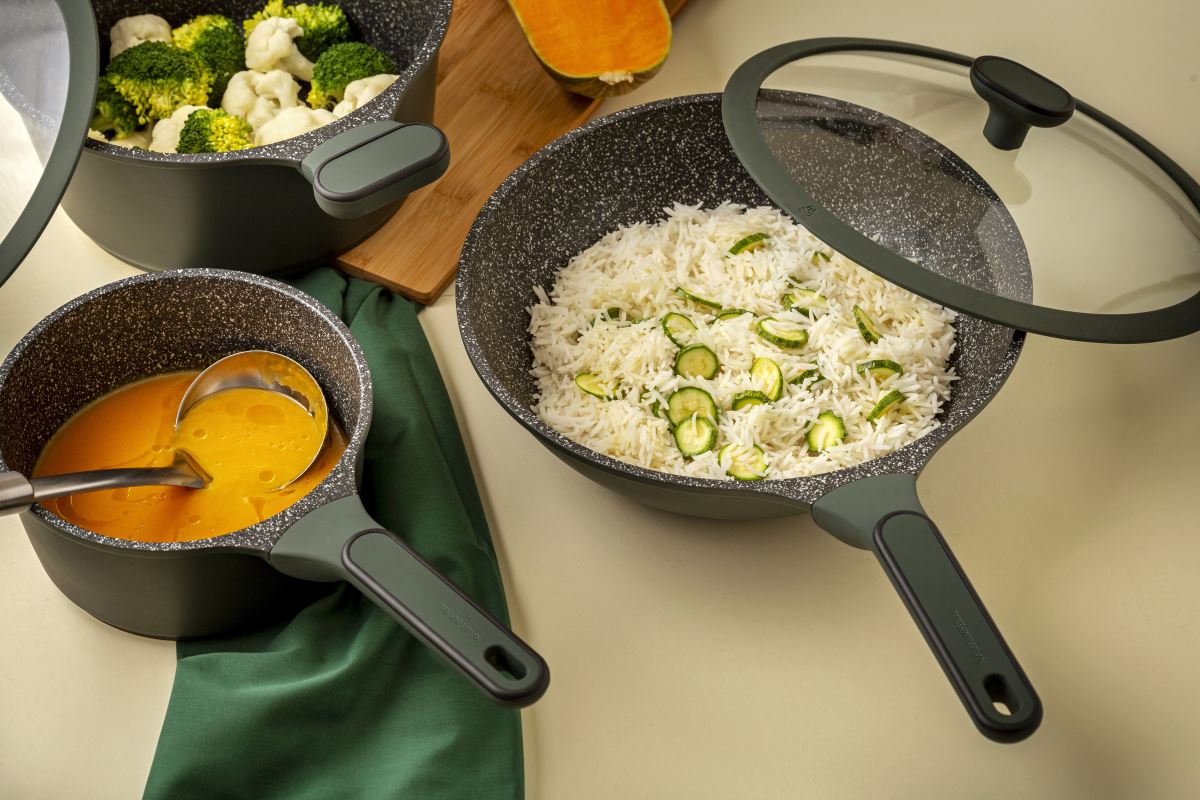
You love cooking and you always want the best result in the kitchen. That's why you have kitchen utensils of all kinds but you do not know which is the healthiest or how they are used properly? You have read that ceramic utensils are healthier than non-stick utensils because the second have toxic substances that are transferred to the food during cooking. What is really the truth? Is there a health risk and which utensil should you choose according to your needs?
What makes a cookware non-stick?
Before comparing the two utensils, it is important to understand how the non-stick coating of a utensil works. Normal metal utensils, those made of stainless steel, have tiny pores on their surface that when heated contract and so the food sticks. That is why when cooking in metal utensils, it is important to use oil or butter to fill these pores and prevent food from sticking.
The ceramic or the non-stick coating on the utensils acts just like oil or butter. The pores of the non-stick utensils differ from the rest of the utensils as they are specially made to prevent the food from sticking to the bottom.
[i] The non-stick composition was invented in 1930 by the chemical company Chemours and was first used as a non-stick cooking surface in the 1960s. This is the substance PTFE which is particularly useful!
Ceramic Utensils: the Pros + the Cons
Ceramic utensils have so advantages as some disadvantages. The main advantage of non-stick coatings is that they are more durable over time. But let's see the rest ...
Price: Ceramic cookware is usually more expensive than non-stick cookware.
Durability: The ceramic coating is more durable compared to the non-stick.
Safety: Ceramic utensils are not made of minerals and do not contain metals or toxic chemicals.
Cleaning: Ceramic utensils are easy to clean thanks to the non-porous surface, especially if cleaned immediately after cooking. If the food gets cold, there is a risk that the surface of the pan will be damaged during cleaning.
Cooking quality: Do not use oils in a ceramic pan, as they can damage the non-stick properties of the utensil.
Efficiency: The ceramic coating has better heat retention compared to the standard non-stick coating. They can be heated slowly but maintain the temperature of the food for a long time.
The ceramic utensils by NAVA stand out due to their ecological construction as they are made and packaged from recycled materials while at the same time produced in a way that reduces carbon dioxide emissions. They do not contain PTFE and PFOA and are resistant to high temperatures (up to 300 ° C).
High quality terrestrial ceramic utensils
Non-Stick Utensils: the Pros + Cons
Non-stick cookware is cheaper, more modern and lighter than a ceramic cookware!
Price: Non-stick cookware usually has a more affordable price compared to a ceramic cookware.
Durability: The non-stick coating is not as durable as ceramic.
Safety: When the non-stick pan begins to deteriorate, there is an increased risk of food being exposed to toxic chemicals. For this reason it is best not to use the utensil at high temperatures. Heat increases the risk of leaking toxic chemicals or metals into food. When the utensil starts to deteriorate, it is definitely time for a new!
Cleaning: They are easy to clean!
Cooking quality: They offer easy cooking as they heat up quickly!
Efficiency: As we said before, they heat up quickly due to the material they are made of (aluminum), so we save energy by cooking even at low temperatures. However, these utensils do not retain heat as much as a ceramic utensil!
The non-stick cookware by NAVA has specially designed non-heated soft touch handles to enjoy a secure grip that protects you from high temperatures.
Large variety of non-stick utensils Imperial & Nature
Who wins the battle: Non-Stick Cookware vs Ceramic Cookware?
It is clearly in your hand to bring out the winner of your kitchen. Non-stick cookware is always a good choice while ceramics are the classic example. Both types of utensils, however, ensure a perfectly healthy cooking with perfect flavors.
Also, we can give you two tips:
If you prefer a non-stick utensil then you should be very careful with its overheating, while on the other hand if you are a fan of ceramics, then we recommend washing by hand rather than in the dishwasher, as in the long run their non-stick surface can be damaged .
After all, the most important is the proper use!
Discover the utensils with ceramic or non-stick coating and place an immediate order.